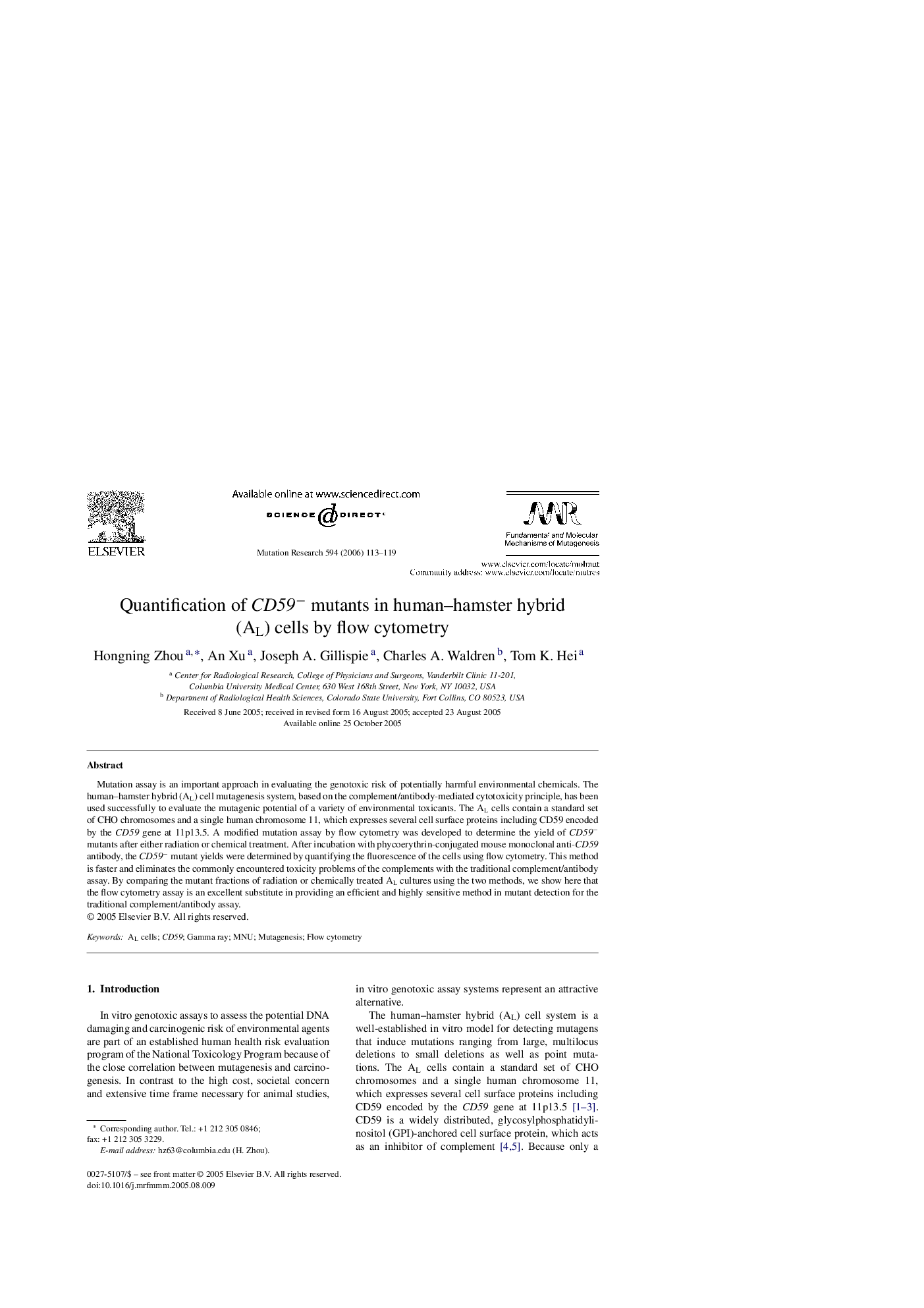| Article ID | Journal | Published Year | Pages | File Type |
|---|---|---|---|---|
| 2147619 | Mutation Research/Fundamental and Molecular Mechanisms of Mutagenesis | 2006 | 7 Pages |
Mutation assay is an important approach in evaluating the genotoxic risk of potentially harmful environmental chemicals. The human–hamster hybrid (AL) cell mutagenesis system, based on the complement/antibody-mediated cytotoxicity principle, has been used successfully to evaluate the mutagenic potential of a variety of environmental toxicants. The AL cells contain a standard set of CHO chromosomes and a single human chromosome 11, which expresses several cell surface proteins including CD59 encoded by the CD59 gene at 11p13.5. A modified mutation assay by flow cytometry was developed to determine the yield of CD59− mutants after either radiation or chemical treatment. After incubation with phycoerythrin-conjugated mouse monoclonal anti-CD59 antibody, the CD59− mutant yields were determined by quantifying the fluorescence of the cells using flow cytometry. This method is faster and eliminates the commonly encountered toxicity problems of the complements with the traditional complement/antibody assay. By comparing the mutant fractions of radiation or chemically treated AL cultures using the two methods, we show here that the flow cytometry assay is an excellent substitute in providing an efficient and highly sensitive method in mutant detection for the traditional complement/antibody assay.
